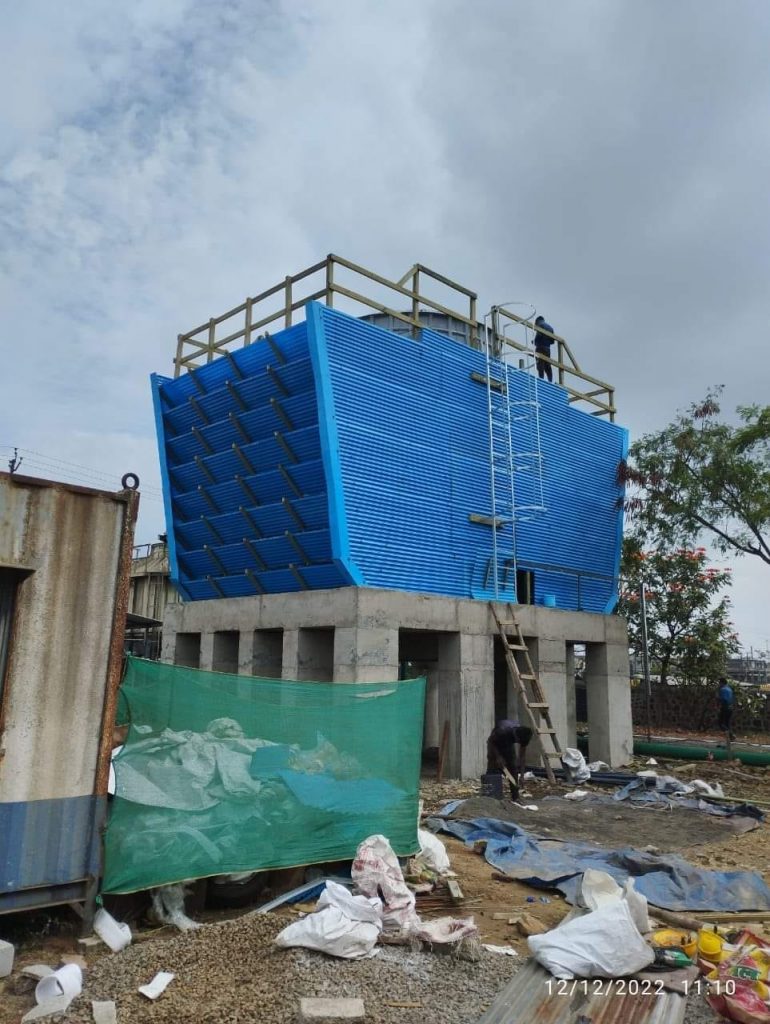Maintenance of Wooden Cooling Towers: Key Steps & Best Practices
Wooden cooling towers require regular maintenance to prevent decay, ensure efficiency, and extend lifespan (typically 20–30 years). Below is a structured maintenance guide:
1. Routine Inspections
Frequency: Monthly (critical) + Annual (comprehensive)
What to Check?
- Wood Condition:
- Look for rot, cracks, or soft spots (probe with a screwdriver).
- Check joints and fasteners (stainless steel should not corrode).
- Fill Media (Splash Bars):
- Clogging from algae, scale, or debris.
- Replace damaged wooden slats or PVC fills.
- Water Distribution System:
- Nozzles free of clogs or misalignment.
- Drift Eliminators:
- Ensure they’re intact (prevents water loss).
- Basin & Structure:
- Remove sediment, sludge, or biological growth.
2. Chemical Treatments for Wood Preservation
Frequency: Every 1–3 years (depending on exposure)
Types of Treatments:
| Treatment | Purpose | Application Method |
| Copper Naphthenate | Prevents rot/fungi | Brush or spray |
| Borate (Timbor) | Insect/termite resistance | Pressure-treated |
| Algicides (e.g., CuSO₄) | Controls algae/biofilms | Added to water |
| Waterproof Sealants | Reduces moisture absorption | Coating (e.g., epoxy) |
Note: Avoid CCA (Chromated Copper Arsenate) if water discharges into the environment.
3. Cleaning & Debris Removal
Frequency: Quarterly (or more in dusty/dirty environments)
Steps:
- Shut down the tower.
- Drain & scrub the cold water basin.
- Pressure-wash fill media (wood/PVC) to remove scale/biofilm.
- Clean nozzles & pipes to ensure even water distribution.
- Remove leaves, dirt, or debris from air intakes.
4. Water Treatment (Prevent Scaling & Corrosion)
Frequency: Continuous (automated) + Monthly testing
Key Water Parameters to Monitor:
| Parameter | Ideal Range | Risk if Uncontrolled |
| pH | 7.0–8.5 | Acidic water rots wood; alkaline causes scale |
| Chlorides | <500 ppm | Accelerates wood decay |
| Hardness | <300 ppm (as CaCO₃) | Scaling on fills/nozzles |
| Biocide Level | As per manufacturer | Prevents algae/bacteria |
Common Treatments:
- Biocides (e.g., bromine, chlorine) – Control microbes.
- Scale inhibitors (e.g., polyphosphates) – Prevent mineral buildup.
5. Structural Repairs & Component Replacement
Frequency: As needed (based on inspections)
Common Fixes:
- Replace rotting wood planks (use redwood/cedar for longevity).
- Upgrade fill media from wood to PVC
